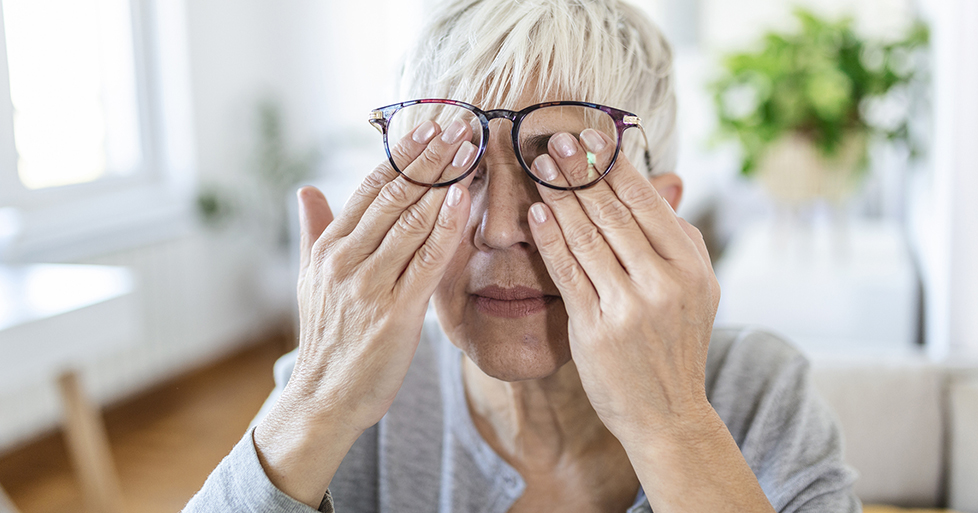Keep an Eye on Your Vision

Many people live with great vision, and things both near and far are easy to identify, with or without eyeglasses or contact lens. Millions of others live with a visual impairment. They find it hard to see objects far away, or they notice they are not able to do some of their previously regular activities, like reading a book, seeing a computer screen clearly, cooking a meal, or driving a car.
February is Low Vision Awareness Month. According to the Centers for Disease Control (CDC), more than seven million Americans have vision impairment, including one million who are blind. Another 93 million US adults are at risk for severe vision loss. These numbers are expected to increase because of the aging population and increase in chronic disease.
Literature shows that there is a higher risk of vision loss among Hispanic/Latino and people of African descent. Why is this? Some chronic conditions (e.g., diabetes, high blood pressure) can put you at higher risk for vision loss. These conditions are more common among Hispanic/Latino individuals than non-Hispanic whites. Hispanic/Latino people are almost 2.5 times more likely to have diabetes, compared to non-Hispanic whites.
Despite advances to address issues related to vision, there are times when the vision cannot be corrected with glasses, contacts, or other standard treatments like taking a medication or having surgery.
So, what is low vision?
Low vision is determined if you cannot see well enough to do things like:
- See a television or computer screen clearly
- Read
- Drive
- Recognize people’s faces
- Tell the difference between colors
Types of low vision:
- Central vision loss (not seeing things in the center of your vision)
- Peripheral vision loss (not being able to see things out of the corners of your eyes)
- Night blindness (not being able to see in low light situations, e.g., darkened room)
- Blurry or hazy vision that is not correctable
Common causes of low vision:
- Age-related macular degeneration (AMD) can affect a person’s central vision and result in severe loss of central vision. Risk factors include being age 50 and older, smoking, having high blood pressure, and eating a diet high in saturated fat.
- Cataracts are a condition in which, as proteins in the lens break down, an eye’s natural lens becomes cloudy, and things appear blurry or hazy and the color of objects is dull or muted.
- Diabetic retinopathy is a complication from diabetes that damages the blood vessels of the light-sensitive tissue at the back of the eye (retina). At first, diabetic retinopathy might have no symptoms or cause only mild symptoms; however, as it progresses, a person may experience spots or dark strings floating in their vision (floaters), blurred vision, fluctuating vision, dark or empty areas in their field of vision, and vision loss.
- Glaucoma is a disease that damages the optic nerve. It usually happens when fluid builds up in the front part of the eye. The extra fluid increases pressure in the eye, which damages the optic nerve. There is no cure for the damage, but medications can help control eye pressure.
What are low vision impacts?
- Decrease in social participation
- Increase risk for falls and/or injury
- Feelings of isolation
- Challenges reading medication bottles
- Loss of independence doing activities of daily living (e.g., bathing, dressing, walking, and cooking)
What can you do?
- Get regular eye exams.
- Talk to your eye doctor about vision rehabilitation services. Though there is no cure, vision rehabilitation programs offer a wide range of services, including training for magnifying and adaptive devices, ways to complete daily living skills safely and independently, guidance on modifying your home, and information on where to find the support you need to help you cope with your vision loss.
- Make sure you have appropriate lighting and remove glare whenever possible.
- Declutter your environment and keep pathways clear.
- Sometimes the use of contrast can be helpful (e.g., putting a dark colored placemat under a light-colored plate).
https://www.youtube.com/watch?v=Kmqdotz0lxs
https://www.nei.nih.gov/sites/default/files/2019-05/LivingWithLowVisionBooklet.pdf
https://www.cdc.gov/visionhealth/resources/features/vision-loss-mental-health.html
 Contributor Mary Pat O’Leary RN, BSN, is a senior planner at Aging and Disability Services, the Area Agency on Aging for Seattle & King County. She thanks Dr. Lance Matsuda, an eye doctor at Kaiser Permanente, for his counsel on this article.
Contributor Mary Pat O’Leary RN, BSN, is a senior planner at Aging and Disability Services, the Area Agency on Aging for Seattle & King County. She thanks Dr. Lance Matsuda, an eye doctor at Kaiser Permanente, for his counsel on this article.
This article appeared in the February 2024 issue of AgeWise King County.
![Aging & Disability Services for Seattle & King County [logo]](https://www.agingkingcounty.org/wp-content/themes/sads/images/seattle-ads-logo.png)